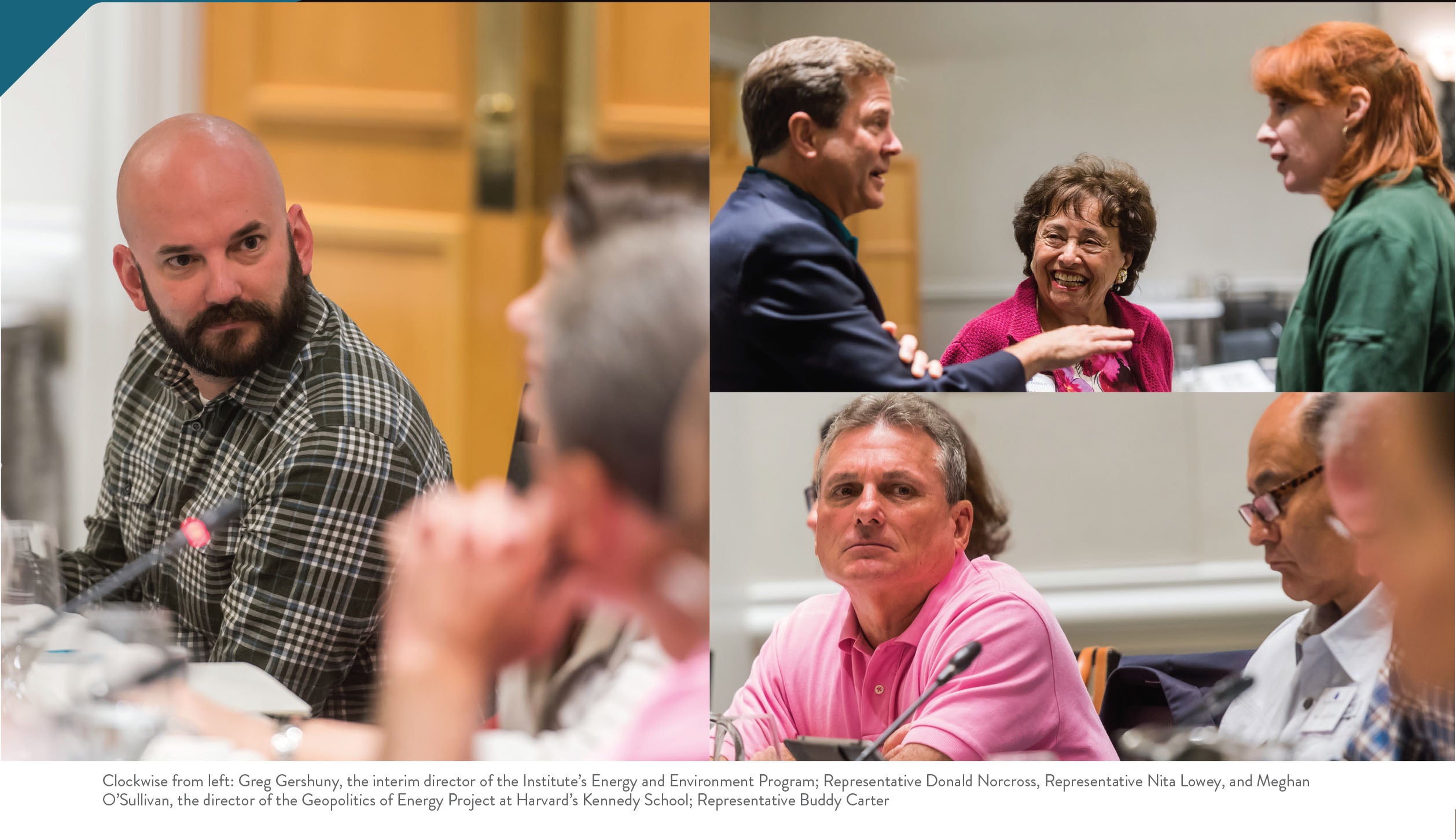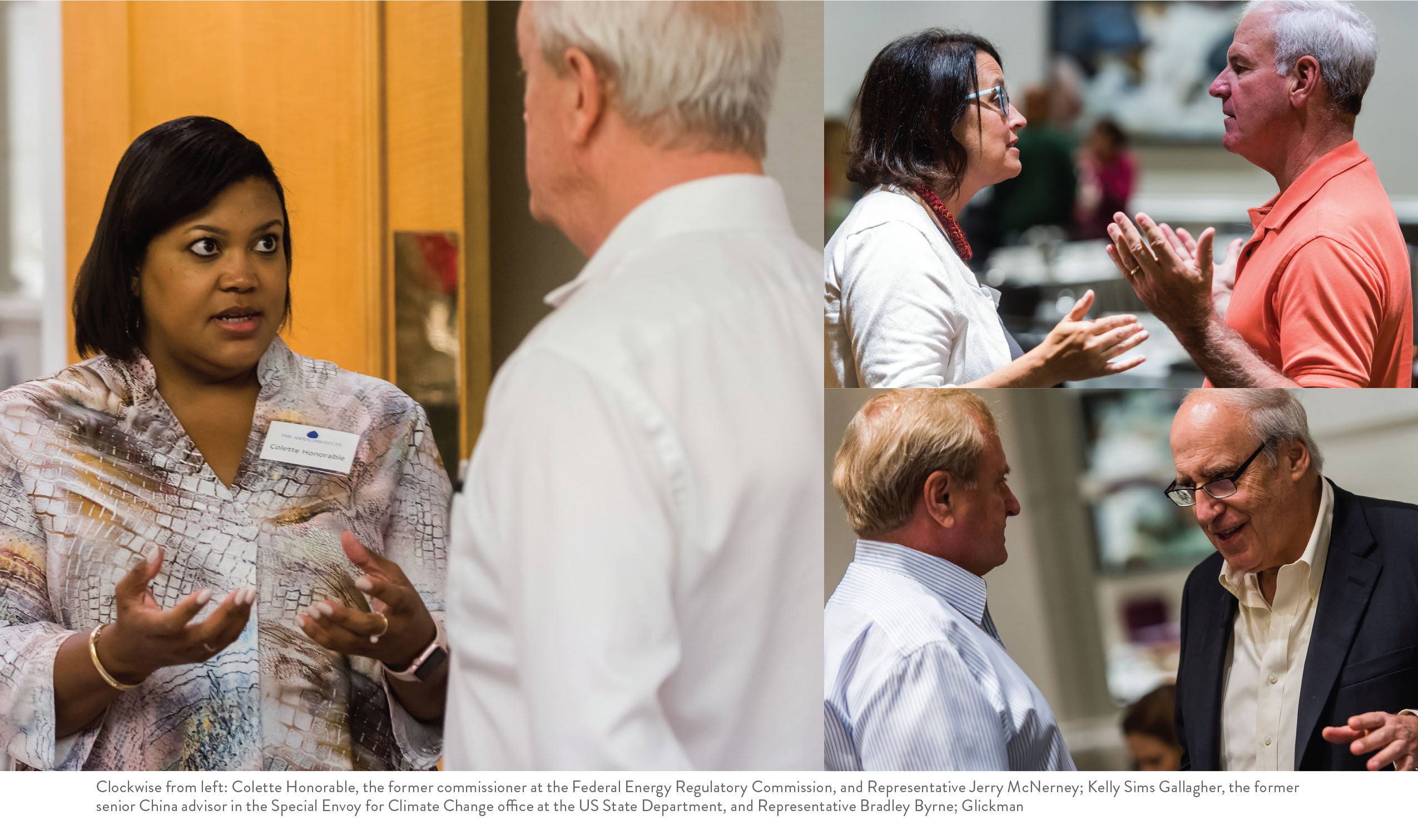The Congressional Program helps elected officials to form relationships across the aisle and find common ground. In other words, it shows them how they can work together.
“Partisan darts, the inability to agree on any basic facts, and the nastiness level surpass anything I have ever witnessed on Capitol Hill,” Dan Glickman, the executive director of the Aspen Institute’s Congressional Program, says. As a former Cabinet secretary and US representative, Glickman is well educated in how government works. “The perception of most Americans is that our government is not working.”
Political discourse is a cornerstone of democracy, and at its most effective form is both information-based and civil—and that is the heart of the Congressional Program, which builds deeper relationships between members of Congress. For 35 years the program has brought together experts with Democratic and Republican members of the House and Senate and their spouses to discuss specific issues. The program often designs visits for the congressional participants to see firsthand the impact of US-taxpayer dollars.

“It’s incredibly refreshing to see members of Congress discuss and challenge the ideas and potential solutions put forth by experts at our conferences,” Glickman says. “Especially in the current political environment, it’s remarkable to watch discussions unfold at our roundtables. And it is a reminder that our federal legislators are real and hard-working people looking for the best solutions—though they may disagree on the best approaches.”
A small roundtable, a balance of Rs and Ds, the inclusion of spouses, assigned seating at dinners, all meetings off the record—these are the “secret sauce,” as Bill Nell, the deputy director of the Congressional Program, describes the design he has fine-tuned over his 31-year tenure at the program. Members of Congress tell the program’s directors exactly how its conferences shape their relationships with other participating members, and how its relationship-building and thorough analysis of policy options help their decision making. “These conferences provide a deep dive into issues I have no other way to become so immersed in,” is how one Republican congressional participant describes the impact. “The opportunity to interact with other members and the superb subject-matter experts is invaluable.” This member of Congress compiles a thorough summary of each conference with key points by each expert and takeaways that become required reading for his staff.
“The first day of the conference, I said to myself, ‘Why am I here?’ ” a first-time congressional participant says. “The second day, as more ideas developed, I realized, ‘I can’t miss this!’ ”
The intent of the conferences is not to advocate for a particular outcome. Rather they provide the resources and the venues necessary for members of Congress to really engage with one another on policy discussions in the national interest. As a result of conversations during previous Congressional Program conferences, members of Congress have introduced legislation, invited conference scholars to meet with their constituents, built coalitions with other congressional participants, and reexamined long-held political beliefs.
The agenda, which provides a close examination of a policy topic, has to be balanced, thought provoking, and offer members access to top experts. Agendas are developed over discussions and meetings with scholars, and often by tapping into the resources at 2300 N Street, the Institute’s Washington headquarters.

While planning an August conference on energy, for example, collaboration between Institute programs was key. Nell worked closely with Greg Gershuny, the interim director of the Institute’s Energy and Environment Program, sharing ideas about agenda items and potential experts. Both programs benefited: “Some of the scholars were new to me, and I’m likely to invite many to participate in future sessions in our programs—very useful,” Gershuny says. “Working with the Congressional Program was the deepest collaboration I’ve had at the Aspen Institute.”
Other connections in the building have been invaluable to the Congressional Program. Nell says that for the past eight years, he and Jonathon Price, of the Aspen Strategy Group, have swapped names and contacts, since both programs work in the international arena. When the Congressional Program wanted to invite Mary Robinson to be a conference panelist, the staff had no direct or indirect connection: Robinson, the former president of Ireland and at the time the special UN envoy to the Great Lakes Region of Africa, had never heard of the program. But she’d heard of Peggy Clark. As the executive director of the Institute’s Global Innovators Group, Clark had partnered with Robinson on human-rights efforts and made the link for the Congressional Program.
Of course, the collaborations are not just about experts and agenda brainstorming. If an Institute program needs a great ground coordinator in Turkey or China, or a list of vetted hotels in Brazil, or the names of security-service options in Ethiopia, the Congressional Program opens its address book.
As the 116th Congress begins with more than 100 new members, Glickman says: “We feel our work is more vital than ever. It may be true that our government often does not operate efficiently—it was never supposed to. We have three distinct and coequal branches of the system, and Congress is the first branch, the Article I branch.” If members of Congress are well informed and act respectfully toward each other, he says, the system of checks and balances is more likely than not to accomplish the public’s business effectively. And that is what the Congressional Program is built to do.